
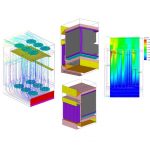
CFD-1Networking chassis thermal model which includes optimal design of inlet and exit, fan selection, and identification of hot spots 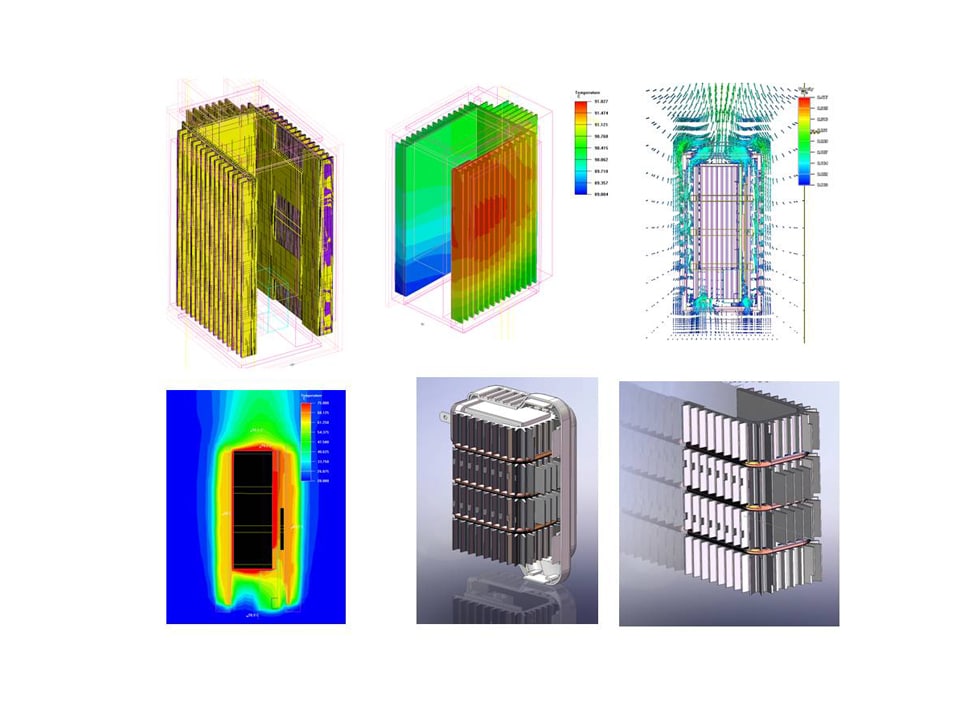
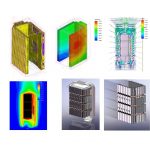
CFD-2Wireless router thermal model posed challenges due to natural convection cooling method, small form factor, and high power components. 
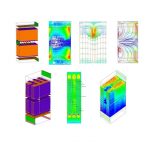
CFD-3Progression of networking/telecom chassis design, starting with customers existing design, which includes inefficient recirculation zones and hot spots, to the Heatscape design showing improved airflow and lower temperatures. 
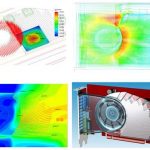
CFD-4Thermal design of high power graphics card solution using radial fin layout to better guide airflow from fan. 
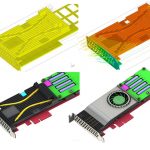
CFD-5For this PCI-E heatsink, finely detailed meshing is required to build highly accurate thermal models. This is so that we can insure the accuracy of our CFD results compared to the actual testing results. |
Home > Computational Fluid Dynamics (CFD)
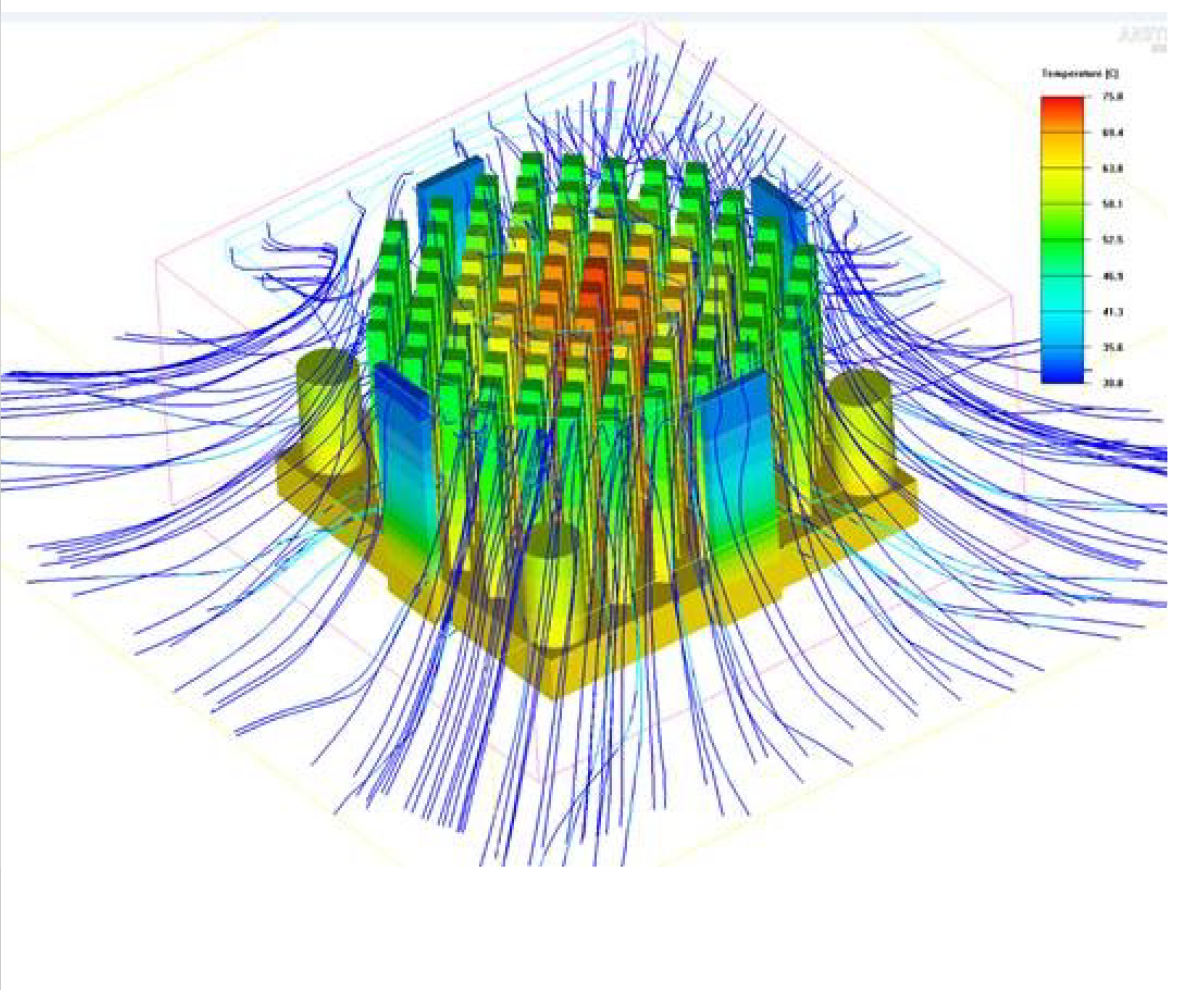
Computational Fluid Dynamics (CFD)
Heatscape engineers use the latest CFD thermal analysis tools to accurately simulate the thermal behavior of a particular device, board, or chassis. Based on the simulation data, verified through extensive testing, an efficient thermal solution can be designed for each application. Thermal modeling can be performed at the component, board, heatsink, and system level to provide insight into the thermal characteristics of the project.